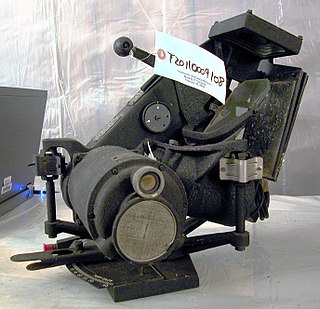 W
WA bombsight is a device used by military aircraft to drop bombs accurately. Bombsights, a feature of combat aircraft since World War I, were first found on purpose-designed bomber aircraft and then moved to fighter-bombers and modern tactical aircraft as those aircraft took up the brunt of the bombing role.
 W
WThe Course Setting Bomb Sight (CSBS) is the canonical vector bombsight, the first practical system for properly accounting for the effects of wind when dropping bombs. It is also widely referred to as the Wimperis sight after its inventor, Harry Wimperis.
 W
WThe Drift Sight was a bombsight developed by Harry Wimperis in 1916 for the Royal Naval Air Service (RNAS). It used a simple mechanical device to measure the wind speed from the air, and used that measurement to calculate the wind's effects on the trajectory of the bombs. The Drift Sight eliminated the need for a stopwatch to perform this calculation, as on earlier devices, and greatly eased the bomb aimer's workload.
 W
WThe Low Level Bombsight, Mark III, sometimes known as the Angular Velocity Sight, was a Royal Air Force (RAF) bombsight designed for attacks by aircraft flying below 1,000 feet (300 m) altitude. It combined components of the Mark XIV bomb sight with a new mechanical computer. It featured a unique solution for timing the drop, projecting a moving display onto a reflector sight that matched the apparent motion of the target at the right instant.
 W
WThe Mark XIV Bomb Sight was a bombsight developed by Royal Air Force (RAF) Bomber Command during the Second World War. It was also known as the Blackett sight after its primary inventor, P. M. S. Blackett. Production of a slightly modified version was also undertaken in the United States as the Sperry T-1, which was interchangeable with the UK-built version. It was the RAF's standard bombsight for the second half of the war.
 W
WThe Norden Mk. XV, known as the Norden M series in U.S. Army service, is a bombsight that was used by the United States Army Air Forces (USAAF) and the United States Navy during World War II, and the United States Air Force in the Korean and the Vietnam Wars. It was an early tachometric design that directly measured the aircraft's ground speed and direction, which older bombsights could only estimate with lengthy manual procedures. The Norden further improved on older designs by using an analog computer that continuously recalculated the bomb's impact point based on changing flight conditions, and an autopilot that reacted quickly and accurately to changes in the wind or other effects.
 W
WThe Stabilized Automatic Bomb Sight, or SABS, was a Royal Air Force bombsight used in small numbers during World War II. The system worked along similar tachometric principles as the more famous Norden bombsight, but was somewhat simpler, lacking the Norden's autopilot feature.